Golden Retrievers are known for their loving, gentle, and loyal nature. So it can be shocking and confusing when a normally docile Golden Retriever shows signs of aggression. The term “aggressive Golden Retriever” may seem counterintuitive, but aggression can develop in any dog, even this famously friendly breed. But don’t worry – an aggressive Golden Retriever is not a lost cause or a “bad dog.” Like people, dogs react to their environment, training, health, and past experiences. This blog is designed to help you understand what’s really going on, what behaviors to look out for, and how to treat and train your Golden Retriever with patience, compassion, and practical solutions. Whether you’re a new dog owner or someone who’s recently experienced changes in their pet’s behavior, this guide will walk you through the causes, signs, and proven strategies to turn things around because every Golden Retriever deserves a chance to feel safe, understood, and loved.
Contents
- 1 Is an Aggressive Golden Retriever Rare or Misunderstood?
- 2 Understanding the Temperament of an Aggressive Golden Retriever
- 3 Common Behavior Problems That Cause Golden Retriever Aggression
- 3.1 Fear-Based or Protective Aggression
- 3.2 Resource Guarding and Food Aggression
- 3.3 Pain or Medical Issues Behind Sudden Aggression
- 3.4 Training Aggressive Golden Retrievers: A Step-by-Step Guide
- 3.5 Start with Calm, Consistent Commands
- 3.6 Positive Reinforcement Instead of Punishment
- 3.7 Seek Professional Help If Needed
- 4 How to Handle an Aggressive Golden Retriever During Grooming
- 5 How to Handle an Aggressive Golden Retriever at Home and Around Others
- 6 Final Thoughts: Patience is Key. Every Aggressive Golden Retriever Deserves a Chance
Is an Aggressive Golden Retriever Rare or Misunderstood?
Most people think of a Golden Retriever as a fun, tail-wagging companion who gets along well with everyone from small children to other pets. And in most cases, that’s true. Golden Retrievers are one of the friendliest and most trainable dog breeds, making them popular as family dogs, therapy dogs, and even service dogs. So, encountering an aggressive Golden Retriever can be not only surprising, but also alarming.
Although aggression in Golden Retrievers is rare, it is not uncommon and is often misunderstood. Often, perceived aggression can be a response to fear, overexcitement, resource guarding, or even a symptom of pain. Unfortunately, these behaviors are often taken too quickly, without understanding the context or underlying cause. It’s also important to note that not all Golden Retrievers are born with the same temperament. Like people, dogs have their own personalities. An angry Golden Retriever is not a breed trait, but the result of factors such as early experiences, training methods, lack of socialization, or unresolved fear.
So if you’re dealing with an aggressive Golden Retriever, don’t panic or blame your dog. This behavior is a sign that something deeper is calling for your attention. With time, persistence, and care, even the most reactive Golden Retriever can become calm, confident, and balanced.
Understanding the Temperament of an Aggressive Golden Retriever
To help an aggressive Golden Retriever, it’s important to understand what temperament actually means. Temperament refers to a dog’s natural character—how it responds to the world, copes with stress, and reacts to people, animals, and new environments. While Golden Retrievers are generally known for their gentle, tolerant, and loving natures, not all Golden Retrievers live up to this ideal. Every dog is unique. Genetics, early socialization, training methods, and environment all influence a Golden Retriever’s behavior. Sometimes an aggressive Golden Retriever has had a difficult start in life—for example, due to early weaning, neglect, or inadequate socialization during the critical puppy stage. Even well-behaved Golden Retrievers can develop fear-related aggression due to traumatic experiences or chronic stress.
Aggression can also be caused by internal factors, such as fear, frustration, or health issues. A dog in pain, for instance, would snarl or growl as a warning. In these cases, it is not a “bad dog,” but a natural response to discomfort. Likewise, a dog that has not been given clear boundaries may develop reactive behavior as a coping mechanism. It is also important to distinguish between different types of aggression. A Golden Retriever that growls when approached while eating may be demonstrating a need to protect his belongings, while a Golden Retriever that lunges at strangers may be demonstrating fear or insecurity. Neither of these behaviors makes the dog inherently dangerous — he just needs guidance, structure, and security.
Understanding the temperament of an aggressive Golden Retriever does not mean accepting unwanted behavior – it means seeing the big picture. Understanding what triggers aggression will help you manage it with positive reinforcement, safe boundaries, and, if necessary, professional help. Remember: Golden Retriever aggression is not their personality, it is a signal. With the right approach, aggression can be eliminated and their true, loving nature can emerge again.
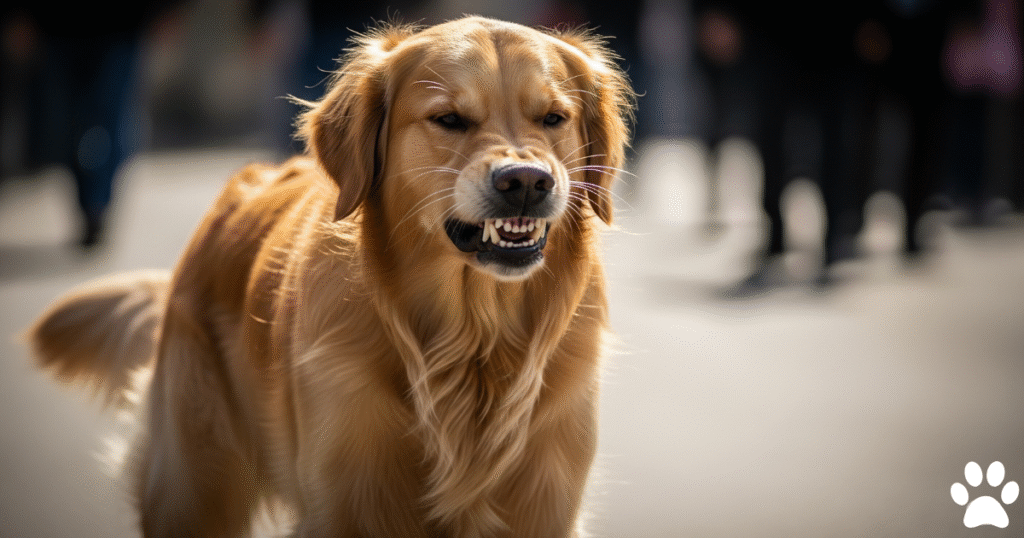
Common Behavior Problems That Cause Golden Retriever Aggression
If your aggressive Golden Retriever starts acting strange, it’s important to look deeper. Dogs don’t become aggressive out of nowhere — there’s always a reason. Identifying these common behavioral problems will take you one step closer to understanding and treating them.
Fear-Based or Protective Aggression
Many Golden Retrievers are naturally protective of their families. While this behavior can be a sign of loyalty, it can sometimes escalate into aggression, especially if the dog feels threatened. A fearful or insecure Golden Retriever may react aggressively to strangers, loud noises, or unfamiliar surroundings. This fear-based aggression has nothing to do with dominance — it’s a self-defense mechanism. For example, if your dog jumps or growls when someone approaches your home or tries to pet him, this may be his way of saying, “I’m scared, go away.” If left untreated, fear can quickly escalate into repetitive aggressive behavior.
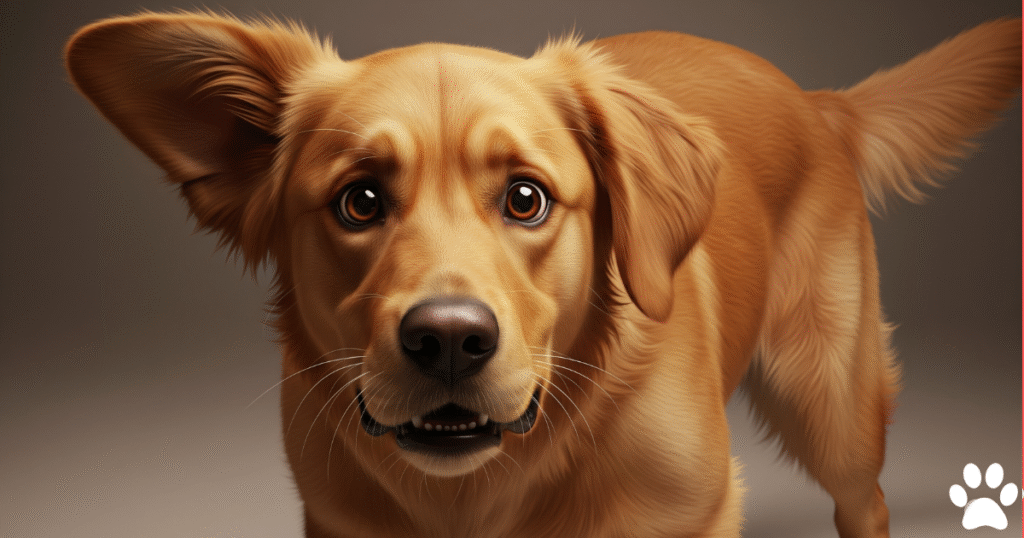
Resource Guarding and Food Aggression
Another common problem in aggressive Golden Retrievers is resource guarding — your dog will guard food, toys, or even his favorite spot on the couch. This behavior often begins subtly: a quiet growl when someone gets too close during mealtime, or a tense posture when another pet tries to share a toy. Golden Retrievers are generally generous dogs. However, if they are deprived of resources or forced to compete for them (especially in early puppyhood), they may feel the need to protect what is theirs. If left untreated, this can escalate into overt aggression, making everyday interactions stressful or even dangerous.
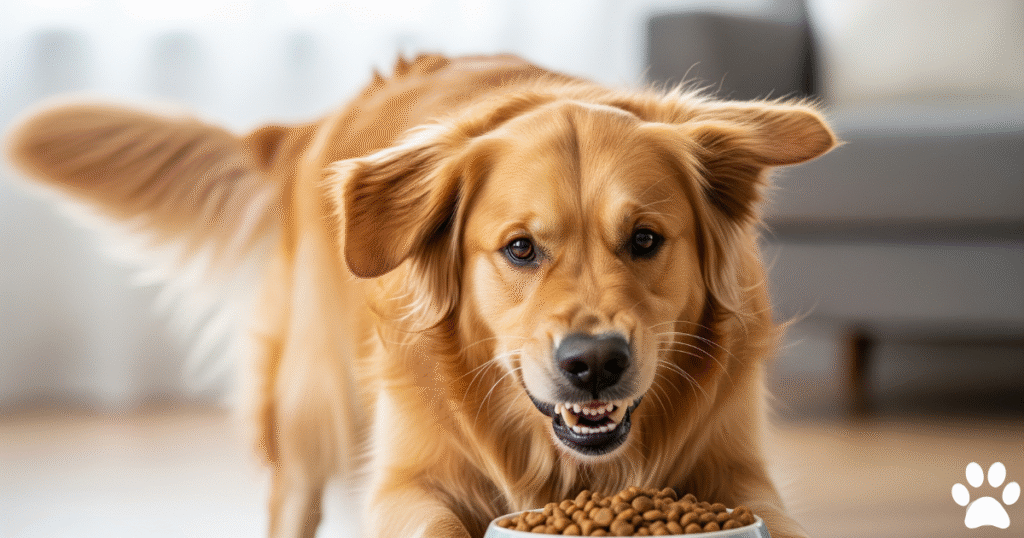
Pain or Medical Issues Behind Sudden Aggression
Sometimes physical discomfort is the most overlooked cause of aggression in Golden Retrievers. Dogs in pain may attack even if they have never shown aggression before. Conditions such as hip dysplasia, arthritis, dental pain, or even an undiagnosed infection can make your dog more irritable, reactive, or sensitive to touch. If your once-docile Golden Retriever suddenly starts biting, growling, or hiding, don’t assume it’s just a pattern — schedule an appointment with your vet right away. Treating the underlying cause can often eliminate the aggression completely.
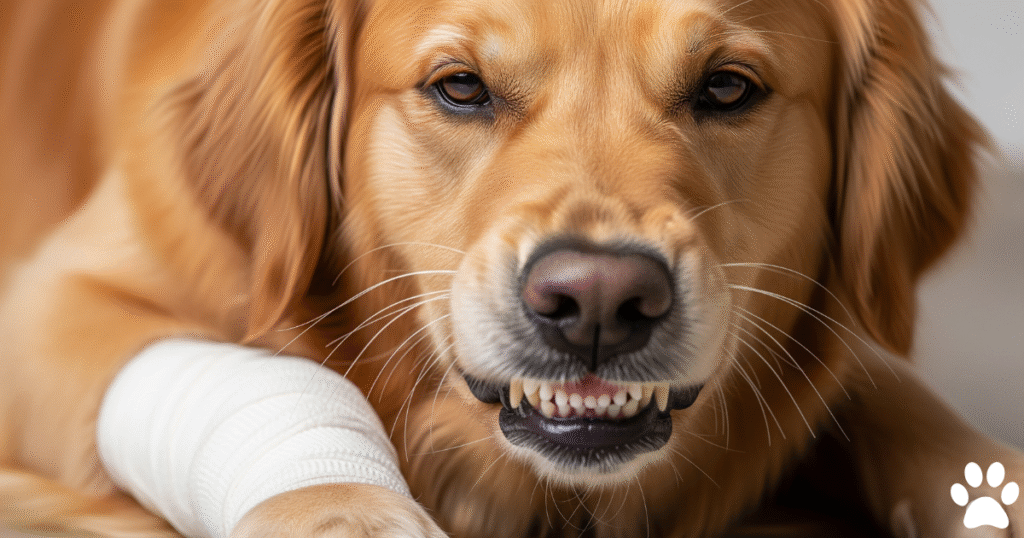
Training Aggressive Golden Retrievers: A Step-by-Step Guide
Once you have identified the cause of the behavior, the next step is to develop a consistent, gentle, and effective training plan. Training an aggressive Golden Retriever takes time, patience, and the right methods, but it is entirely possible. Golden Retrievers are highly intelligent and obedient, which makes them excellent candidates for rehabilitation when done correctly.
Start with Calm, Consistent Commands
Dogs that are aggressive require structure. Establishing a steady, predictable environment is the first step in educating an aggressive Golden Retriever. Use straightforward instructions like sit, remain, and leave on a regular basis; refrain from shouting or making abrupt moves that might set off a defensive reaction.
Establishing daily rituals also fosters trust. Your Golden Retriever will feel more secure if you feed, walk, and exercise them at the same time every day. Your dog will eventually become less reactive and more at ease.
Positive Reinforcement Instead of Punishment
Avoid punishment-based training methods at all costs. Yelling, leash correction, or physical punishment can increase anxiety and make an aggressive Golden Retriever even more reactive. Instead, reward good behavior with treats, praise, or affection.
If your dog remains calm in a situation that would normally trigger aggression, such as encountering another dog on a walk, immediately give him a treat. This positive association teaches your Golden Retriever that calm is rewarded. Over time, aggressive behavior will decrease as your dog learns new, more acceptable responses.
Seek Professional Help If Needed
If you feel overwhelmed, that’s okay—training an aggressive Golden Retriever is not a one-person job. Professional dog trainers or behaviorists have experience reading dog body language, creating customized behavior plans, and safely conducting training.
Look for trainers who specialize in positive reinforcement and aggression management. Avoid trainers who promise “quick fixes” or use aversive methods. A good trainer will engage you in the process and help you develop confidence and leadership skills in your role as your dog’s guardian.
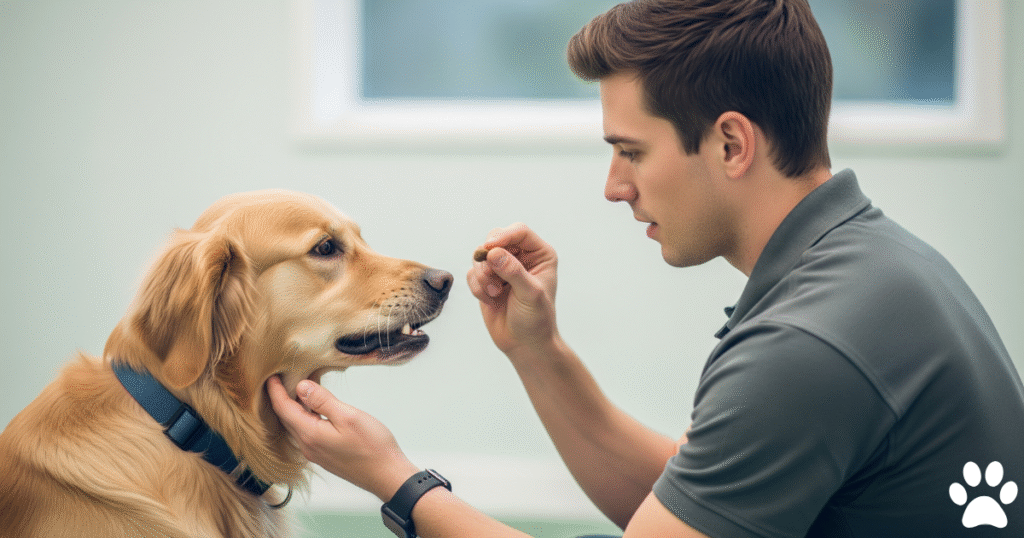
How to Handle an Aggressive Golden Retriever During Grooming
While grooming is usually a bonding time between dog and owner, it can be stressful for an aggressive Golden Retriever. Whether it’s brushing, bathing, nail trimming, or ear cleaning, many dogs respond to grooming with fear, discomfort, or a negative past experience.
Golden Retrievers need frequent grooming because of their thick, double coat. If grooming is done in a rush or too vigorously, or if your dog has been injured during grooming in the past, your dog may associate grooming with danger. This association can lead to snapping, growling, or even biting. In these cases, grooming becomes not only stressful, but also risky.
Why Grooming Triggers Aggression in Some Golden Retrievers
For an aggressive Golden Retriever, grooming can feel like a loss of control. Holding or touching sensitive areas like paws, ears, or tail can cause panic, especially after a previous injury. Dogs may also react to certain tools (like nail clippers or files) or noises (like a hair dryer).
Additionally, pain (due to arthritis, skin conditions, or soreness) can make some grooming tasks uncomfortable or even painful. This discomfort often leads to defensive behavior. Because grooming is often repeated, the stress increases with each session.
Tips for Safely Calming and Brushing an Aggressive Golden Retriever
With time and patience, brushing an aggressive Golden Retriever can go from being a daunting task to an easy and even enjoyable experience.
Slow desensitization: Let your dog sniff the tools and associate them with treats.
Use calming aids: Natural sprays, calming bandages, or vet-recommended calming chews can help.
Shorten sessions: Start with a few minutes a day, especially when brushing or trimming nails.
Reward calm behavior: Praise and reward each small success.
Never force grooming: Stop if your dog shows signs of stress—forcing can increase aggression.
Consider a professional groomer: Choose one who has experience working with anxious or aggressive dogs.
How to Handle an Aggressive Golden Retriever at Home and Around Others
Handling an aggressive Golden Retriever is not about isolating your dog or living in constant fear. It’s about creating a safe, structured environment where your Golden Retriever feels secure, understands expectations, and behaves accordingly. Whether at home, on walks, or around guests, your care plan should always emphasize safety, consistency, and calm.
Aggression often occurs in overstimulating situations, such as loud gatherings, visits from strangers, or chaotic play with other pets. By identifying your Golden Retriever’s triggers and creating a predictable routine, you can reduce anxiety and prevent most incidents.
Setting Boundaries with People and Pets
Not everyone realizes that Golden Retrievers can be aggressive. So it’s up to you to protect your dog’s comfort zone. If your Golden Retriever seems uncomfortable around strangers, ask visitors not to approach or touch him unless instructed. In multi-pet households, supervise their interactions and feed them separately to avoid competition or guarding behavior.
Use visual cues (like a collar or colorful bandana) in public to signal your dog that he needs space. This will prevent well-intentioned strangers from making your Golden Retriever anxious or irritated.
Socialization Do’s and Don’ts
Gradually introduce your Golden Retriever to new environments and people, rewarding calm behavior with positive reinforcement. Start with a calm environment and gradually increase the tension. Avoid chaotic situations like parks or parties, especially if they have already shown signs of aggression.
Pay close attention to your dog’s body language – a tucked tail, a tense posture, or growling are early warning signs. If you notice these, gently remove him from the situation and reward him once he feels comfortable. Even a well-groomed, aggressive Golden Retriever can enjoy a full and fulfilling life – as long as he is well-groomed and has clear boundaries.
Final Thoughts: Patience is Key. Every Aggressive Golden Retriever Deserves a Chance
Dealing with an aggressive Golden Retriever can be scary, especially when it seems to go against everything the breed is known for. But aggression doesn’t define your dog — it’s a symptom, not a punishment. With the right approach, consistent training, and lots of patience, even the most reactive Golden Retriever can improve, heal, and regain his or her confidence.
It’s important to remember that your dog isn’t “bad” — he or she is communicating the only way he or she knows how. Whether the aggression is driven by fear, pain, confusion, or past trauma, the way forward is through understanding and compassion, not punishment. You don’t have to go through this alone. Find trainers, veterinarians, or aggressive behavior specialists. Find other dog owners who have been through the same journey. And most importantly, trust your Golden Retriever. With time, compassion, and guidance, an aggressive Golden Retriever can become the gentle, loving companion you’ve always dreamed of.
Featured Blogs

Golden Retrievers Grooming Guide for New & Experienced Owners: The Complete Handbook
With their lush double coat and perpetually happy expression, Golden Retrievers are the epitome of canine beauty. But maintaining that...
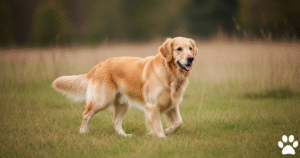
When Do Golden Retrievers Calm Down? A Guide to Energy Levels, Behavior, and Maturity
Golden Retrievers are known for their loving and loyal nature. However, anyone who has ever owned a dog probably knows...
Dr. Nabeel A.
Hi, I’m Dr. Nabeel Akram – a farm management professional by trade and a passionate Golden Retriever enthusiast at heart. With years of experience in animal science and livestock care, I’ve built a career around understanding animals—how they live, thrive, and bring value to our lives. This blog is a personal project born from that same passion, focusing on one of the most loyal and lovable breeds out there: the Golden Retriever. Whether I’m managing farm operations or sharing insights on canine health, behavior, and care, it all ties back to one core belief—animals deserve thoughtful, informed, and compassionate attention. Welcome to a space where professional expertise meets genuine love for dogs.
Facebook |
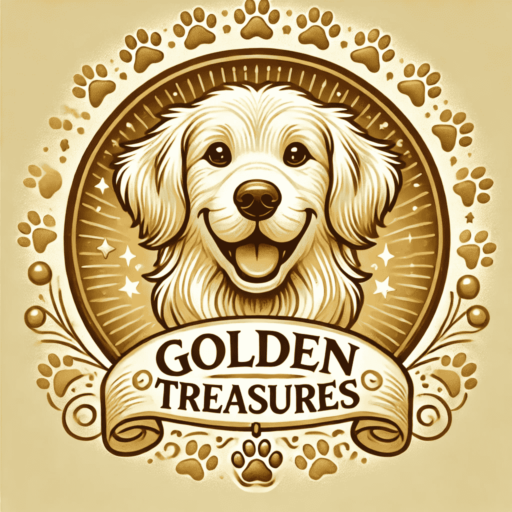
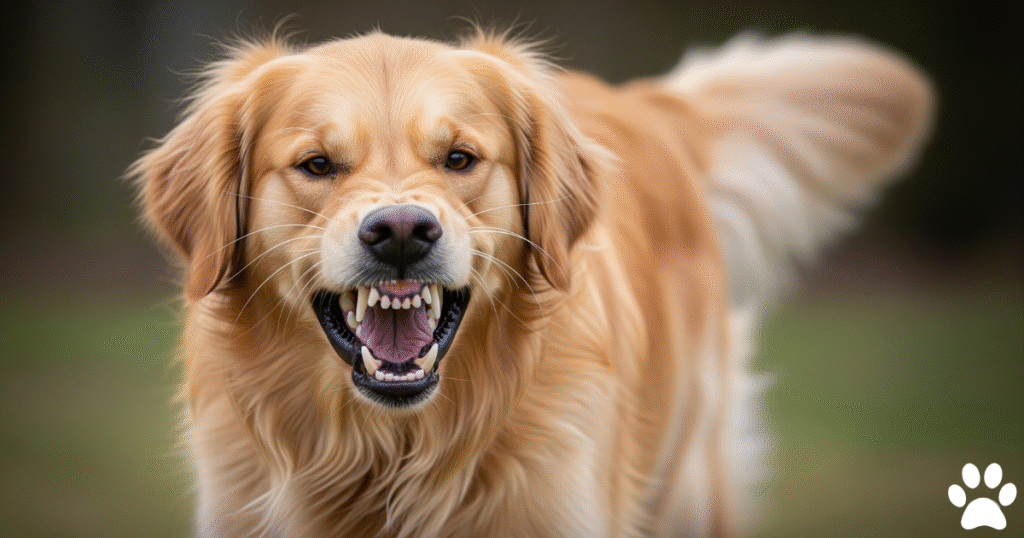
Links will be automatically removed from comments.